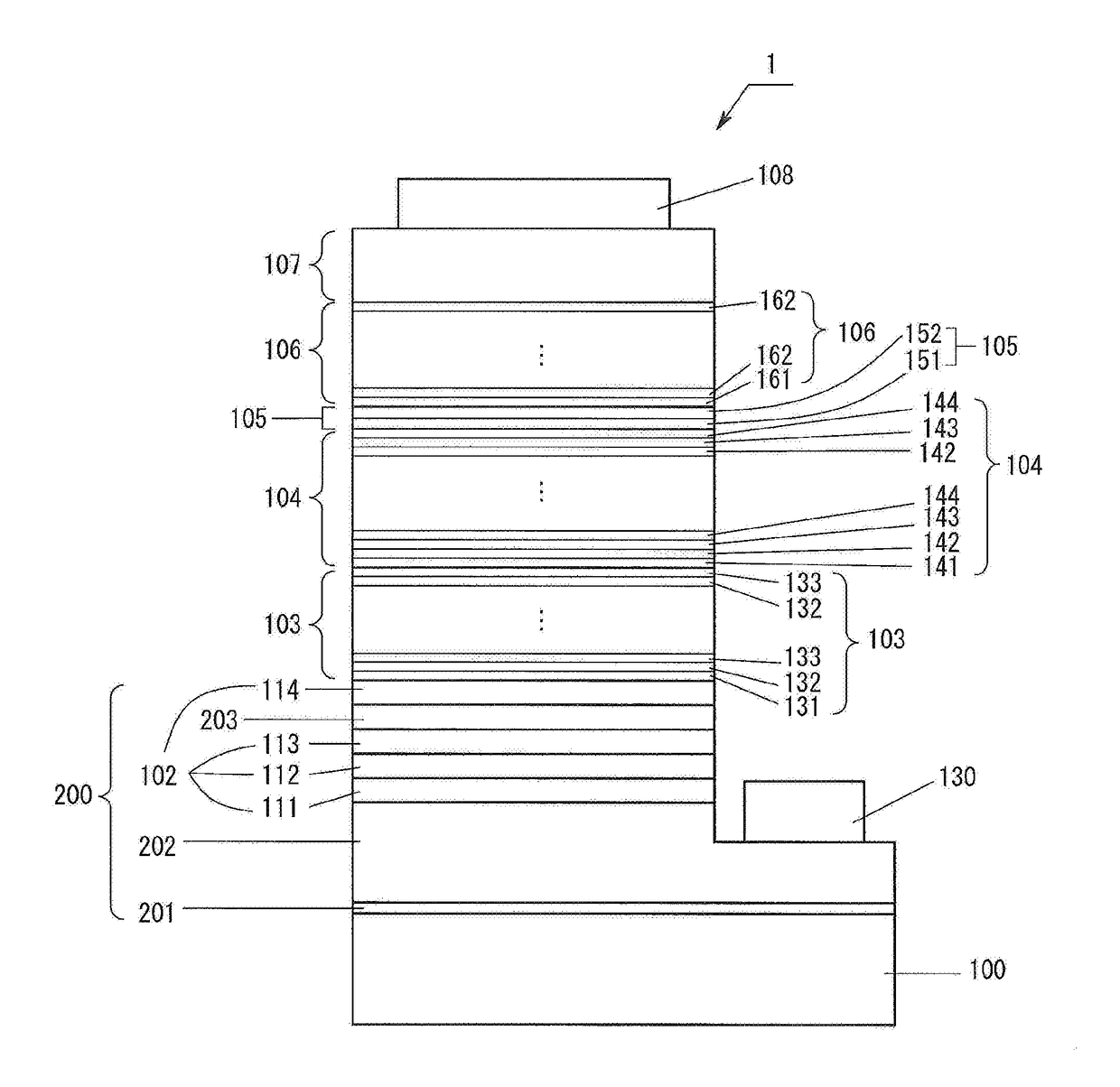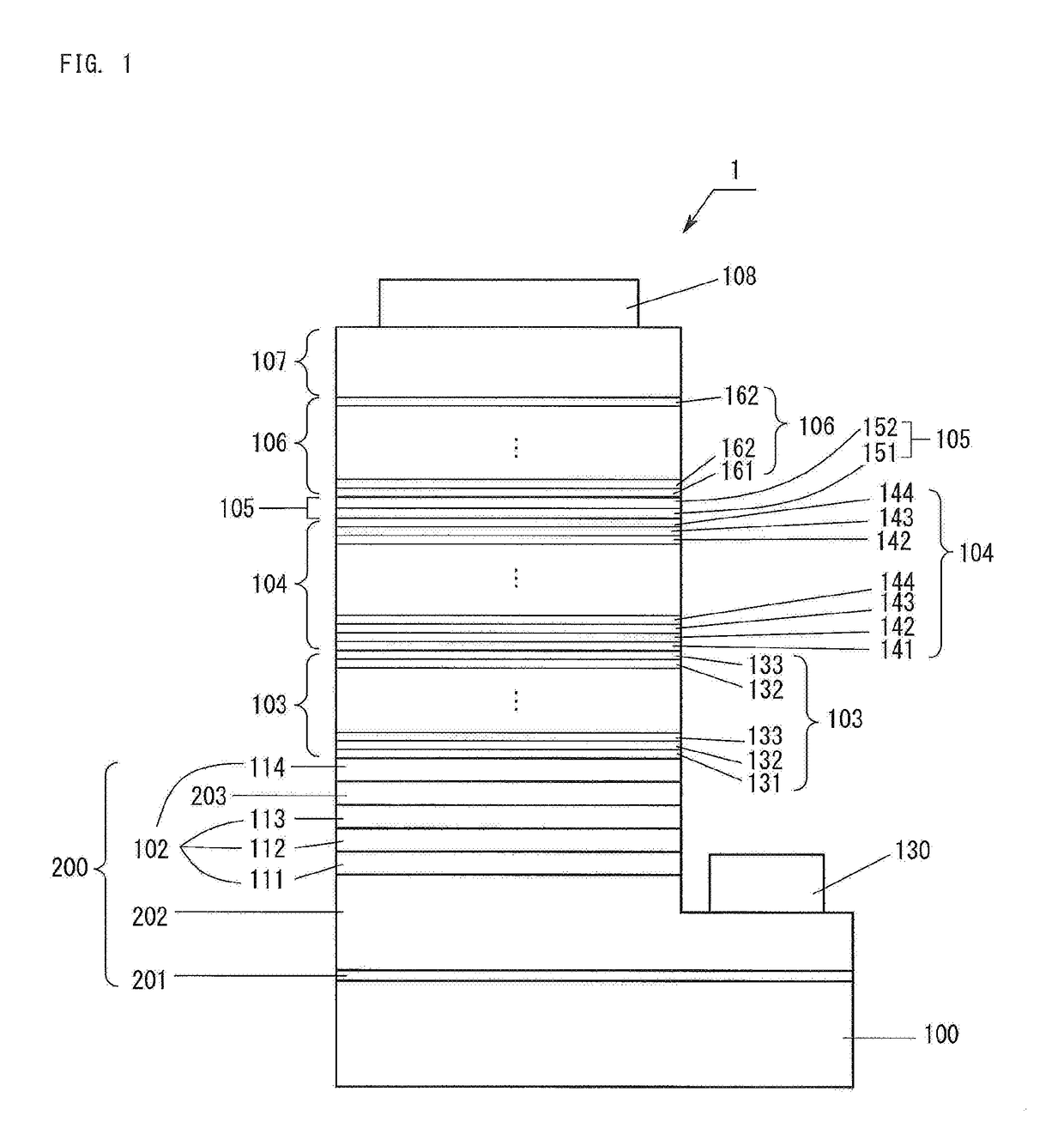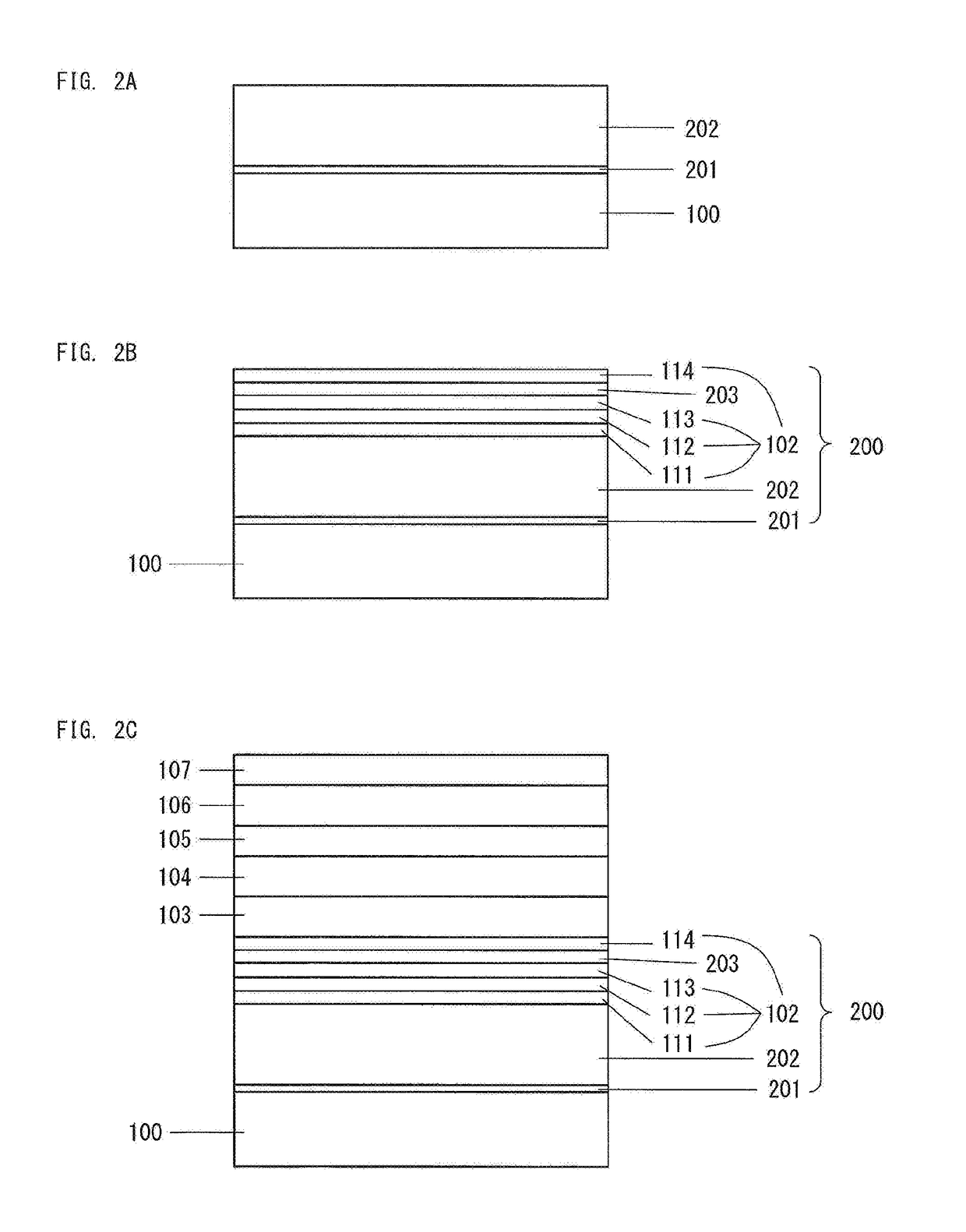Group iii nitride semiconductor light-emitting device
a semiconductor and light-emitting technology, applied in the direction of semiconductor devices, basic electric elements, electrical apparatus, etc., can solve the problems of uneven distribution of electrons in the light-emitting layer thickness direction, inability to consider the density of electrons injected into the light-emitting layer, and inability to achieve uniform thickness of electrons, so as to achieve the effect of increasing the number of electrons contributing to light-emitting, high energy level of electrons injected into the activ
- Summary
- Abstract
- Description
- Claims
- Application Information
AI Technical Summary
Benefits of technology
Problems solved by technology
Method used
Image
Examples
embodiment 1
[0035]FIG. 1 shows the structure of a light-emitting device 1 according to Embodiment 1. The light-emitting device 1 has a structure a sapphire substrate 100; an n-type contact layer 202, an ESD layer (a layer for improving electrostatic breakdown voltage) 102, an n-type layer side superlattice layer (hereinafter, referred to as “n-type superlattice layer”) 103, a light-emitting layer 104, an undoped cladding layer 105, a p-type layer side cladding layer (hereinafter, referred to as “p-type cladding layer”) 106, and a p-type contact layer 107, the layers 202 to 107 being formed of a Group III nitride semiconductor and deposited on the substrate 100 via an AlN buffer layer 201; a p-electrode 108 formed on the p-type contact layer 107; and an n-electrode 130 formed on a portion of the n-type contact layer 202 exposed through removal of the corresponding portions of the layers 102 to 107 by etching from the p-type contact layer 107. A base layer 200 is a stack of all the single crystal...
PUM
 Login to View More
Login to View More Abstract
Description
Claims
Application Information
 Login to View More
Login to View More - R&D
- Intellectual Property
- Life Sciences
- Materials
- Tech Scout
- Unparalleled Data Quality
- Higher Quality Content
- 60% Fewer Hallucinations
Browse by: Latest US Patents, China's latest patents, Technical Efficacy Thesaurus, Application Domain, Technology Topic, Popular Technical Reports.
© 2025 PatSnap. All rights reserved.Legal|Privacy policy|Modern Slavery Act Transparency Statement|Sitemap|About US| Contact US: help@patsnap.com



